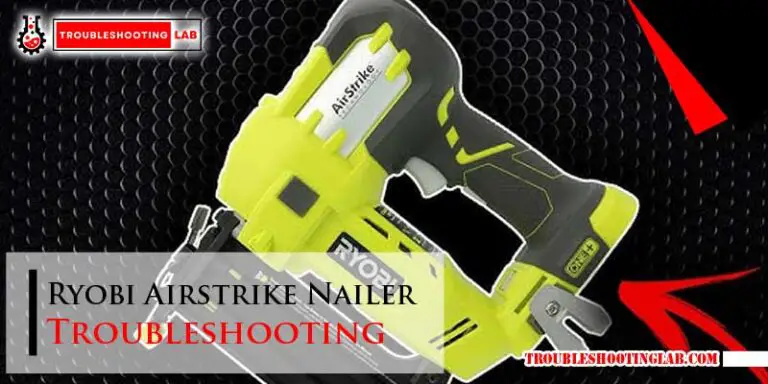Tire Troubleshooting: Unlock the Secrets to Smooth Rides
Tire troubleshooting begins by checking for any visible cuts, punctures, or bulges on the tire sidewalls. Then, inspect the tire tread for uneven wear or low tread depth.
Proper maintenance and regular inspection are key to ensuring safe and efficient performance from your tires. Tires are crucial components of your vehicle, affecting handling, braking, and fuel efficiency. Understanding the basics of tire troubleshooting can help you identify potential issues early on and prevent accidents or breakdowns.
In this guide, we will explore common tire problems, their causes, and simple steps to address them. By familiarizing yourself with these tire troubleshooting tips, you can enhance your driving experience and prolong the lifespan of your tires. Let’s delve into the world of tire maintenance and keep your wheels rolling smoothly on the road.

Common Tire Problems
Uneven Tread Wear
Uneven tread wear can indicate suspension or alignment issues.
Low Tire Pressure
Low tire pressure can lead to increased fuel consumption.
Tire Punctures
Tire punctures are often caused by sharp objects on the road.
Diagnosing The Issues
When encountering tire problems, it’s crucial to diagnose the root cause accurately. By identifying issues early on, you can prevent potential hazards on the road.
Visual Inspection
Performing a visual inspection of your tires is the first step in identifying any visible damage or irregularities.
Tire Pressure Check
Checking the tire pressure ensures optimal performance and longevity of your tires. Proper inflation is vital for safe driving.
In tire troubleshooting, understanding the issues through visual inspection is key. Identifying problems early on will prevent hazards. Starting with a visual inspection can reveal visible damage or irregularities with your tires. Checking tire pressure is also crucial for optimal performance and safety on the road. Proper inflation is a must for safe driving.
Tire Maintenance Tips
Rotating your tires regularly is essential for maintaining even tread wear and extending the lifespan of your tires. This involves moving each tire to a different position on the vehicle to ensure that they all wear evenly. Check your vehicle’s owner’s manual for the recommended rotation pattern.
Ensuring that your tires are properly inflated is crucial for safety and optimal performance. Underinflated tires can lead to increased fuel consumption and uneven tire wear, while overinflated tires can result in reduced traction and a harsher ride. Refer to the manufacturer’s recommended tire pressure and check the pressure regularly, especially before long trips.
Monitoring the tread depth of your tires is vital for maintaining traction and handling. Use a tread depth gauge to measure the depth of the grooves in the tire tread. Replace your tires if the tread falls below the recommended depth for safe driving, typically 2/32 of an inch.
Dealing With Emergency Situations
When it comes to tire troubles, dealing with emergency situations can be a stressful experience. However, with proper knowledge and preparation, you can navigate these challenges smoothly and ensure your safety on the road. In this section, we will discuss two common emergency situations: changing a flat tire and using a temporary repair kit.
Changing A Flat Tire
Changing a flat tire is an essential skill that every driver should know. Follow these steps to safely replace a flat tire:
- Find a safe spot: If you notice a flat tire while driving, carefully guide your vehicle to a safe location away from traffic.
- Gather the necessary tools: Retrieve your spare tire, lug wrench, and car jack from the trunk. These tools will be crucial in the tire-changing process.
- Loosen the lug nuts: Use the lug wrench to loosen the lug nuts on the flat tire, but do not remove them just yet.
- Jack up the vehicle: Place the car jack under the vehicle’s frame near the flat tire. Raise the vehicle until the flat tire is around six inches above the ground.
- Remove the flat tire: Completely unscrew and remove the lug nuts, then carefully take off the flat tire and set it aside.
- Install the spare tire: Lift the spare tire onto the wheel bolts and align the holes with the bolts. Next, hand-tighten the lug nuts to hold the spare tire in place.
- Lower the vehicle: Use the car jack to lower the vehicle until it rests on the ground. Remove the jack and fully tighten the lug nuts with the lug wrench.
- Check the tire pressure: Verify that the spare tire is properly inflated to the recommended pressure for your vehicle. Adjust if necessary.
- Stow the equipment: Store all the tools used for the tire change back in the trunk. Don’t forget to secure the flat tire as well.
Using A Temporary Repair Kit
If changing a tire is not possible or if your spare tire is also damaged, a temporary repair kit can be a lifesaver. Here are the steps to effectively use a temporary repair kit:
- Find a safe place: Move your vehicle to a safe location, away from traffic, to ensure your safety while dealing with the tire repair.
- Locate the puncture: Inspect the tire visually and find the location of the puncture. Remove any debris or foreign objects stuck in the tire.
- Prepare the repair kit: Open the temporary repair kit and familiarize yourself with its contents, typically including a reamer, plug, and adhesive.
- Ream the puncture hole: Use the reamer tool from the repair kit to enlarge the puncture hole slightly. This will allow the plug to fit snugly.
- Insert the plug: Take a plug from the kit and coat it with adhesive. Insert the plug firmly into the puncture hole using a twisting motion.
- Trim excess plug material: Once the plug is securely inserted, trim any excess material flush with the tire’s surface using a knife or scissors.
- Avoid excessive speed and mileage: Temporary repairs are designed to be short-term solutions. Limit your vehicle’s speed and mileage until you can have the tire properly repaired or replaced.
- Seek professional help: It is crucial to have a qualified technician inspect and repair the tire at the earliest opportunity to ensure your safety on the road.
When To Seek Professional Help
While it’s important to perform regular tire maintenance and troubleshooting yourself, there are certain situations where seeking the assistance of a professional is necessary. Identifying irreparable damage and understanding tire replacement are two key areas where professional help can ensure optimal safety and performance. Let’s delve deeper into these points:
Identifying Irreparable Damage
If you notice any of the following signs, it’s crucial to consult a professional:
- Uneven or excessive tread wear: This could be an indication of issues with tire alignment or suspension, which can lead to compromised handling and reduced traction.
- Bulges or bubbles: These deformities on the sidewall of a tire may suggest internal damage caused by an impact or manufacturing defect. They can eventually lead to sudden tire failure.
- Tire punctures: While minor punctures can be repaired, larger punctures or ones closer to the sidewall require professional evaluation to determine if the tire is salvageable.
- Visible cords or belts: If you notice exposed steel cords or belts on your tire, this indicates serious damage that warrants immediate professional attention.
By having a professional assess irreparable tire damage, you can prevent the risk of potential accidents and ensure the longevity of your tires and overall vehicle performance.
Understanding Tire Replacement
Knowing when to replace your tires is essential for maintaining optimal safety on the road. Consider the following factors:
- Tread depth: Legally, tires should have a minimum tread depth of 2/32 inches. However, for superior grip, it is recommended to replace tires when the tread depth reaches 4/32 inches.
- Age: Tires typically have a lifespan of six to ten years, regardless of tread depth. Over time, tire compounds degrade, reducing their ability to perform optimally.
- Cracks or dry rot: If you notice visible cracks on the sidewall or tread area of your tires, they may be experiencing dry rot. Dry rot weakens the tire structure, increasing the risk of blowouts.
- Driving conditions: If you frequently drive in extreme weather conditions or off-road, your tires may wear out faster. Regularly monitoring and rotating your tires, as well as seeking professional advice, can help you determine the appropriate timing for replacement.
By understanding when to replace your tires and seeking professional recommendations, you can ensure your safety on the road, enhance vehicle performance, and make informed purchasing decisions.
Frequently Asked Questions For Tire Troubleshooting
How Do I Know If My Tires Are Underinflated?
Underinflated tires may show excessive wear on the outer edges and lower gas mileage.
Why Are My Tires Wearing Unevenly?
Uneven tire wear can be caused by improper alignment, unbalanced tires, or suspension issues.
Can I Drive On A Flat Tire?
It is not recommended to drive on a flat tire as it can cause irreparable damage to the tire and rim.
How Often Should I Rotate My Tires?
Tire rotation should be done every 5,000 to 7,500 miles to ensure even wear and prolong tire life.
What Is The Recommended Tire Pressure For My Vehicle?
The recommended tire pressure can be found in your vehicle’s owner’s manual or on the sticker inside the driver’s door.
Conclusion
In understanding the nuances of tire troubleshooting, one can address various issues for a smoother and safer driving experience. By following the troubleshooting tips and techniques provided, drivers can ensure optimal tire performance and longevity. Remember, regular maintenance and timely inspections are vital for road safety.
Implementing these practices will enhance overall vehicle performance and bring peace of mind to every journey.






